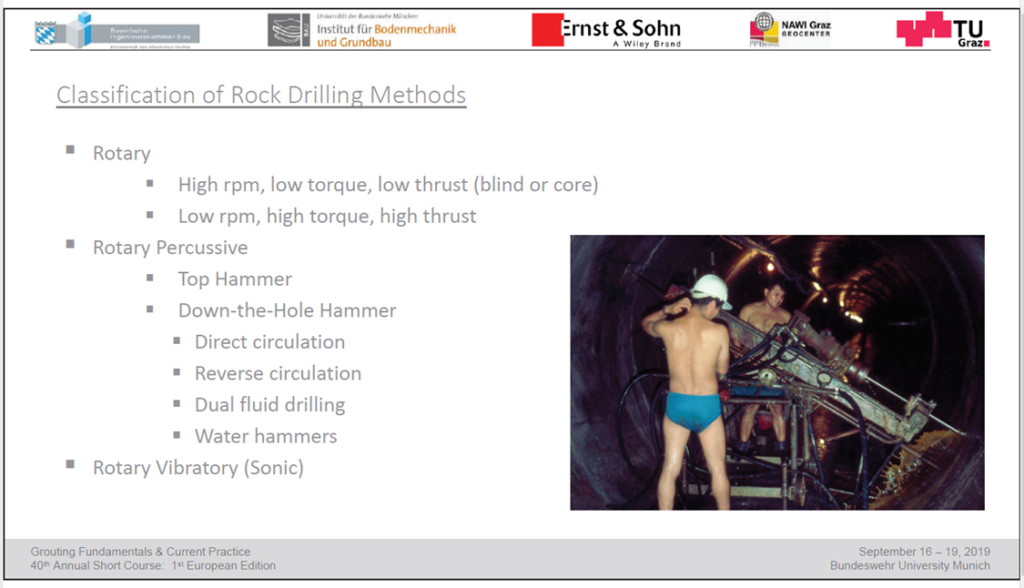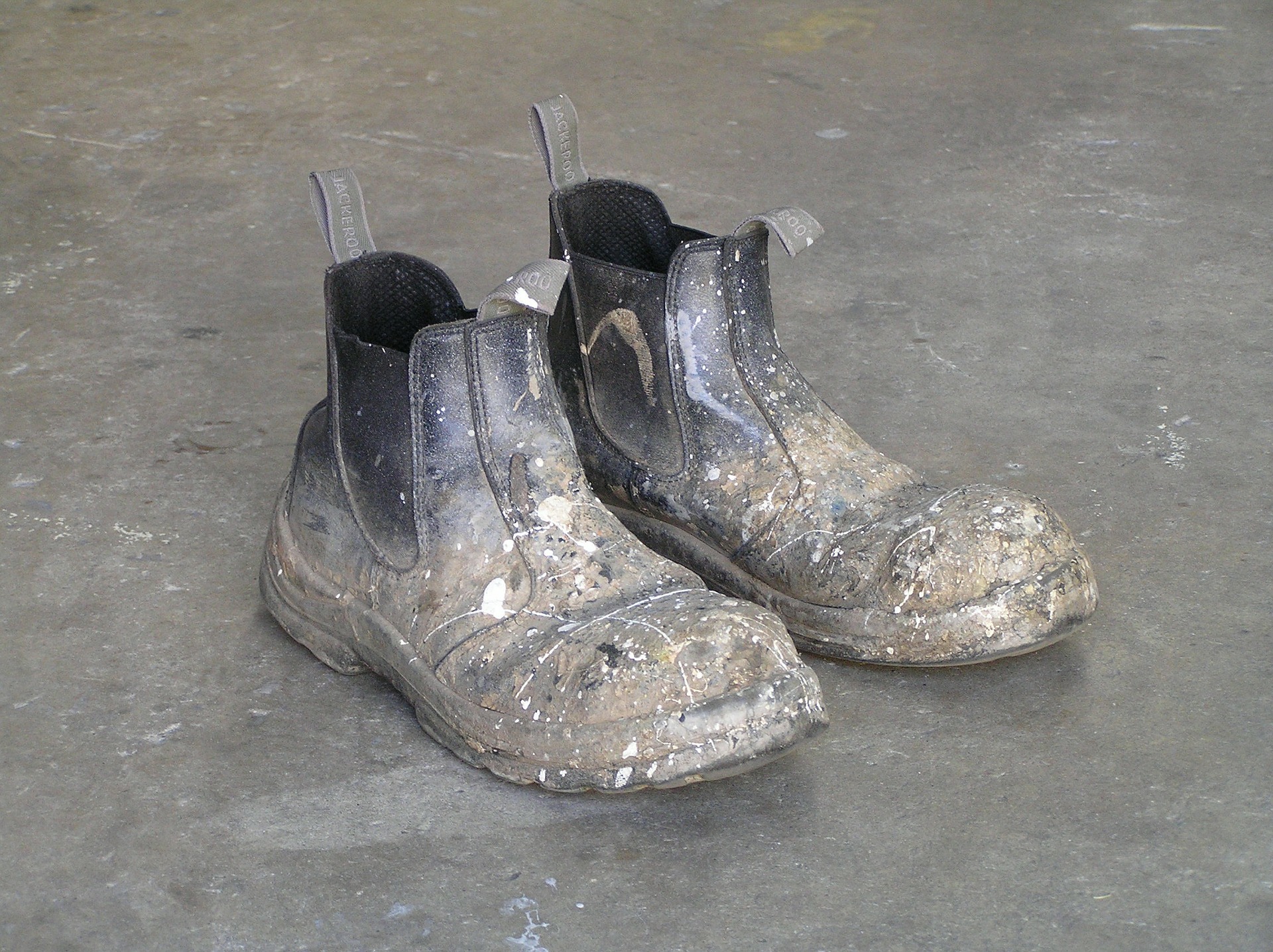It was an absolute premiere to which we sent Philipp and Peter in September. No, this blog is not about Ad Astra, the newest space movie starring Brad Pitt in the highly praised role of an astronaut on his galactic search for his lost father. While he is travelling to infinity and beyond (apparently all the way to the Oscars), “struggling with demons” – a term which in this context can only mean “fighting with space-baboons whose bloody demise in the middle of the film leaves the viewer with the hope to see the post-credit footnote ‘In this production no animals came to harm’”, our delegation instead made its way to Munich, Germany. There, for the first time on European ground, the Grouting Fundamentals took place.
From September 16 to 19, the annual course featured new products, proven techniques and new approaches to tunnelling challenges. Every year, therefore, representatives of executing companies and technicians in product manufacturing, as well as lateral entrants, are among the visitors. It’s a great opportunity to chat with other technicians about their ideas, completed projects and achievements. We were glad about the chance to get an overview of many techniques in modern tunnels and special civil engineering in one place.
And we are even more glad that Peter sent some pictures back to the office so we could “join in” as well:

*****
Peter, what was a content highlight for you?
I was surprised by Dr. Devon Mothersille. I was very interested in the topic “High Capacity Anchors in Soils and Weak Rocks”. It seemed like a side topic of the tunnel and special civil engineering to me, but after the lecture my opinion had been completely changed. At the end of the lecture we got the information that even the dental and maxillofacial medicine have copied some techniques from the tunnelling industry. Because even in the mouth, the demands on the material and the „mortar“ are high.
Which contact did you personally take with you?
I was excited to meet Helmut Wannenmacher. His lecture about “Post Excavation Grouting in Tunnel Construction” reminded me of my studies at university. I never thought that the pressure curve in a pressure pipeline would come to my mind in a lecture at the Grouting Fundamentals.
Particularly impressive was also Scott Kiefer. It was interesting to get to know the man behind the event (and to see how he coordinated everything perfectly as the Master of Time). I am curious to see how Grouting Fundamentals will continue in the future.
Overall, it was also exciting to get in touch with other participants from other European countries in-between the talks – for example at lunch. There were many thrilling stories.
Three things you learned?
- You can trust your gut feeling. When it comes to drilling holes in all types of subsoil, it helps to trust the drill driver.
- I like browsing old books and studying the sketches, drawings and pictures. As I learned, you have to comb through old documents to know which dams represent a security issue.
- Having an open mind and keeping your eyes wide open definitely helps. Many technical areas overlap in various fields. You wouldn’t think that a dentist from South Africa knows not only about cement in maxillofacial surgery, but also in special civil engineering.
Your favourite quotes from the event?
- “Post grouting alone does not work, it’d make sense if you use it together with pre grouting” (Hans-Olav Hognestad)
- “Every borehole is an inspection borehole” (Dr. Donald A. Bruce)
- “Drillers are as diverse a group of people as the industry in which they work. Every drilling operation is different and requires a highly skilled person to ensure that the drilling process is successful” (Australian Drilling Industry Technical Training Committee Ltd. (1997))
Which lecture did you like the most?
„The Evolution of Small Hole Drilling Methods for Geotechnical Construction“ by Dr. Donald A. Bruce.
You wouldn’t believe how many dams were built in a time span of 60 years, between the years 1940 and 2000. And I wasn’t aware of what technical challenges are arising now because of that: It is important to determine in all these structures how well various materials, such as anchors, have been preserved in order to determine the safety of the structure as a whole. Even more impressive is the need to find ways to select the ‘most urgent’ cases and coordinate remedial action. Then comes the question of how to solve it technically. That impressed me very much.
From him is also my favorite slide:

What topics do you think research should address next year?
I believe there is great potential in materials research – in existing as well as in new buildings. Cement is a widely used building material, but there is a lot of energy in terms of CO2 emissions in manufacturing. Replacing these components with less greenhouse-active parts would not only save money in terms of pollutants.
Unsurprisingly, the topic of digital data recording was a very important one at the Grouting Fundamentals as well. A lot of recording is probably simply done just because you can. On the other hand, tools for evaluating digital data in a meaningful way are still underdeveloped – what made it a perfect opportunity for us pioneers in this field to present our achievements in that area.
*****
Meanwhile, not only the Grouting Fundamentals are over, the Munich Oktoberfest, which Peter only just missed, also belongs to the past. As always, it’s going to be an exciting autumn for us: Bernhard takes dancing lessons! Michael starts an MBA. And our developer team is looking forward to the “we are developers” event in November.
Next in the eguana blog: we close the gap between injection material and mixtures to the cake and calories we desperately for winter fat construction. This time we will be joined by Adrian Kainrath of the Tschernutter Consulting GmbH, who helps us to summarise the importance of different materials for quality assurance.
Picturecredits:
PublicDomainPictures, Pixabay (Cover picture)
